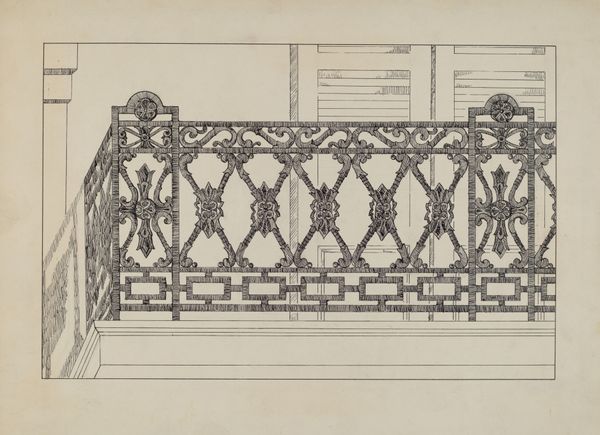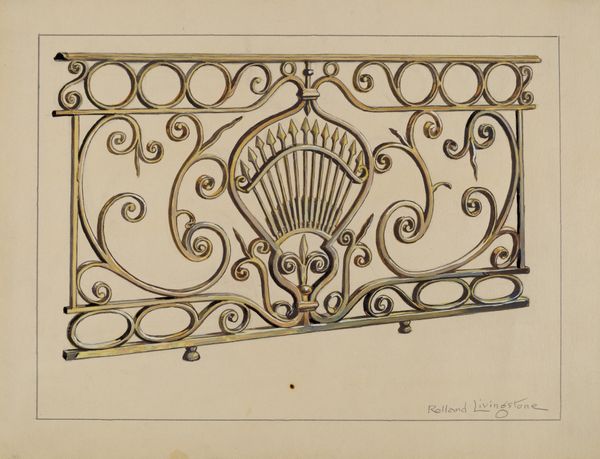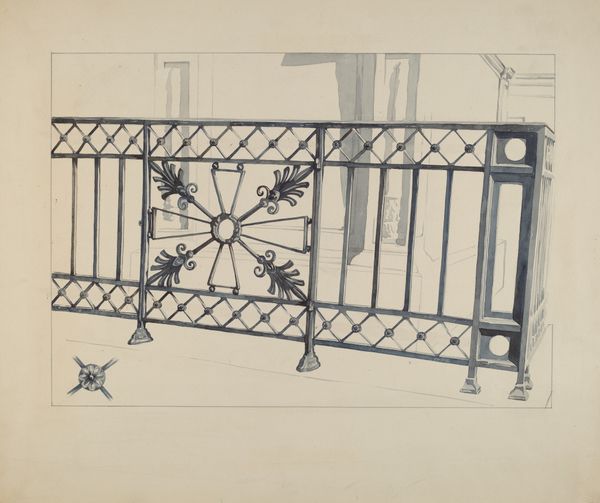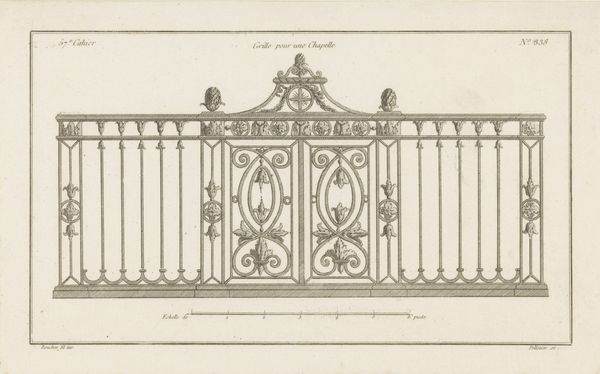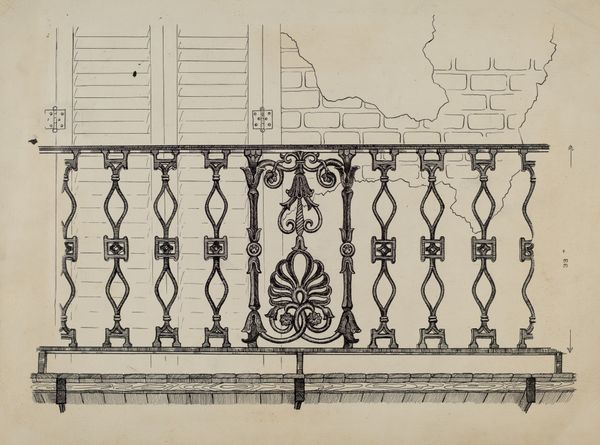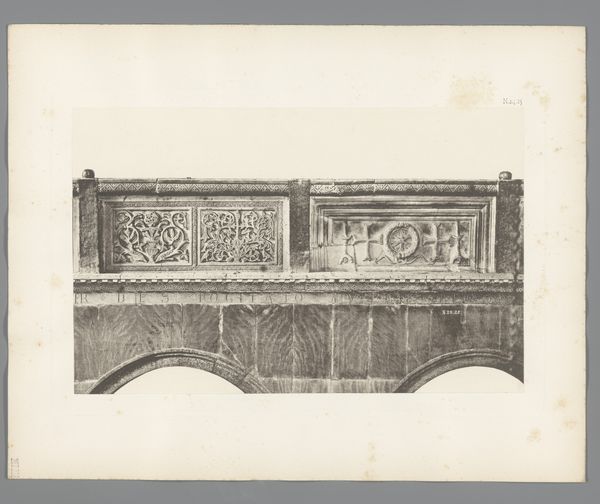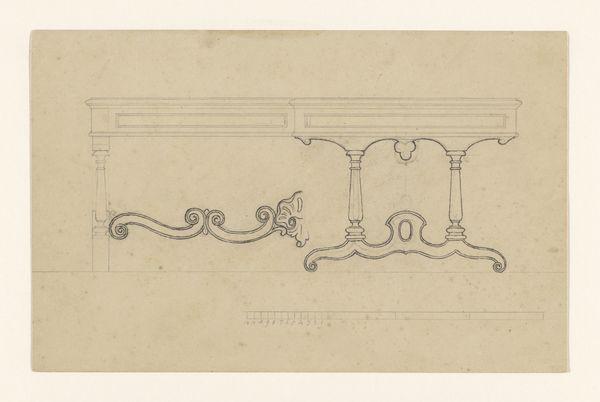
drawing, ink, architecture
#
drawing
#
ink
#
geometric
#
pen-ink sketch
#
line
#
architecture
Dimensions: overall: 25.1 x 33.4 cm (9 7/8 x 13 1/8 in.)
Copyright: National Gallery of Art: CC0 1.0
Editor: This ink drawing is titled "Wrought Iron Balcony Rail," and it was designed around 1936 by Lucien Verbeke. The geometric, looping shapes feel very intentional and poised. How do you interpret this work? Curator: Looking at Verbeke's "Wrought Iron Balcony Rail," I'm immediately drawn to its cultural context. Consider 1936. The world was grappling with the rise of industrialization but also facing impending war. Ironwork, at the time, spoke to both—the strength of industry and the potential for conflict. This piece seems caught in that tension, doesn't it? The elaborate, almost baroque swirls fight against the industrial rigidity of the iron itself. Editor: I see that, definitely a push and pull. So, the design reflects societal tensions of the era? Curator: Precisely. Balconies are liminal spaces—thresholds between private and public life. In the '30s, a time of increased social division, who has access to that space, and how is it visually guarded or opened to the street? Does the rail’s intricate design welcome or subtly warn? Think of the gendered nature of balconies, too—often associated with women observing the world while remaining partially shielded. It’s a stage, in a way. Editor: So, this isn’t just a design sketch, but a statement about societal roles and boundaries. The geometric designs felt beautiful to me initially, but you are helping me understand the layers beneath. Curator: It is indeed! Seeing the historical context really enriches our experience of a simple design. Editor: This was super helpful; now I will start seeing these design choices in terms of social factors.
Comments
No comments
Be the first to comment and join the conversation on the ultimate creative platform.
